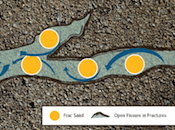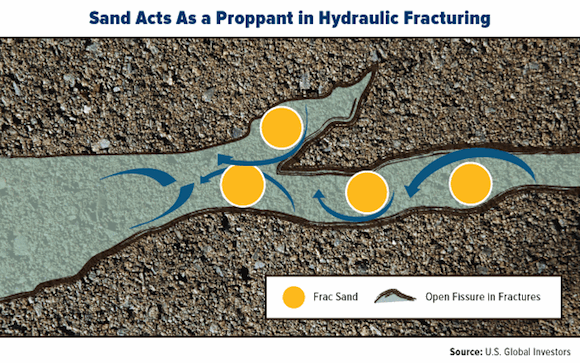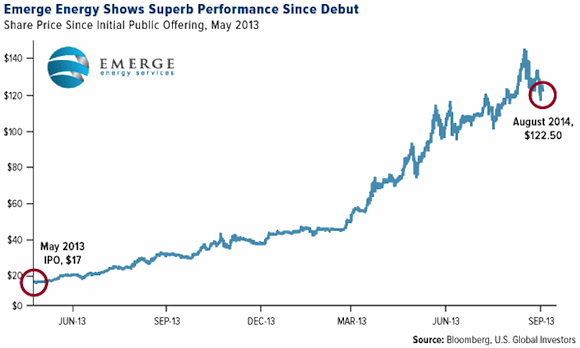
Total U.S. crude oil production averaged an estimated 8.6 million barrels per day in August, the highest monthly production since July 1986, according to the Energy Information Administration (EIA). In our Special Energy Report: An American Energy Renaissance, we highlight that just a few years ago investors were contemplating the supply constraints facing the petroleum industry, but with the disruptive technology in shale oil and gas in the U.S., we could now be looking at decades of drilling ahead.
To make the most out of this energy boom, I like to remind investors to look beyond direct shale plays to find opportunities.
One way of doing so is to become aware of the companies that provide key ingredients or supplies used in the process of hydraulic fracturing, or fracking.
One key ingredient is sand.
According to the Wall Street Journal, due to the enormous increase in the demand for sand, PacWest Consulting Partners expects frackers to use nearly 95 billion pounds of sand this year, up 30 percent since 2013. This projection, made by the energy-consulting firm just one year ago, is a 50-percent increase to its original estimate.
Since many energy companies have adopted the process of fracking in their oil field operations, they have come to rely on sand as an integral component to this procedure.
In fracking, sand can be used as a "proppant." Once the shale rock formations are injected with water and chemicals, it is the proppant (normally treated sand) that keeps the newly formed cracks open after they are made in the rock. This allows the natural gas or crude oil to be extracted more easily.

A recent article from Shale Plays Media highlights that just a year ago oil field fracking operations used around 2,500 tons of sand, whereas today the new fracking techniques call for as much as 8,000 tons of sand to be pumped into a well. (That's 75 to 100 railcars of sand per well!) The article goes on to explain that this "frac sand" is normally high-purity quartz that can withstand between 6,000 and 14,000 pounds of pressure per square inch.
Who is supplying the sand?
Knowing the incredible value of sand to the oil drilling industry makes it easier for us to identify meaningful opportunities for our funds. For example, we want to know who is supplying the sand and who is moving the sand to and from the drill sites—these are the companies to pay attention to.
One company we have identified as a sand success story is Emerge Energy Services. This company deals directly with the production and supply of sand to drill sites. Since debuting in May 2013, the company has seen its share price go from $17 to $122.50 at the end of August.

Sand production companies like Emerge have shifted focus from solely supplying sand for roofing, construction, glassware and golf course projects, over to the enormous demand needed for oil and gas drilling across the United States. The outlook for the energy sector remains strong as we look towards 2015, with the demand for sand showing no signs of a slowdown.
Who is shipping the sand?
Besides sand production companies, railroads throughout North America are another beneficiary of the booming energy industry, and not only because of oil shipments. The rail industry is now busier than ever hauling frac sand across the numerous shale plays.
Union Pacific Corp. is an example of one rail company that has seen a 26-percent increase in hauled railcar loads of sand since 2013. According to the company website, the rail line covers 23 states in the Western two-thirds of the U.S.
There is more than one way to make the most out of the energy renaissance we are living through; Emerge Energy and Union Pacific are two companies we have invested in. Witnessing the adoption of the fracking process fuel demand for frac sand is just one example. I encourage investors to stay curious, ask questions and dig deeper to find all the opportunities that may be right under your nose.
Frank Holmes
U.S. Global Investors

























































